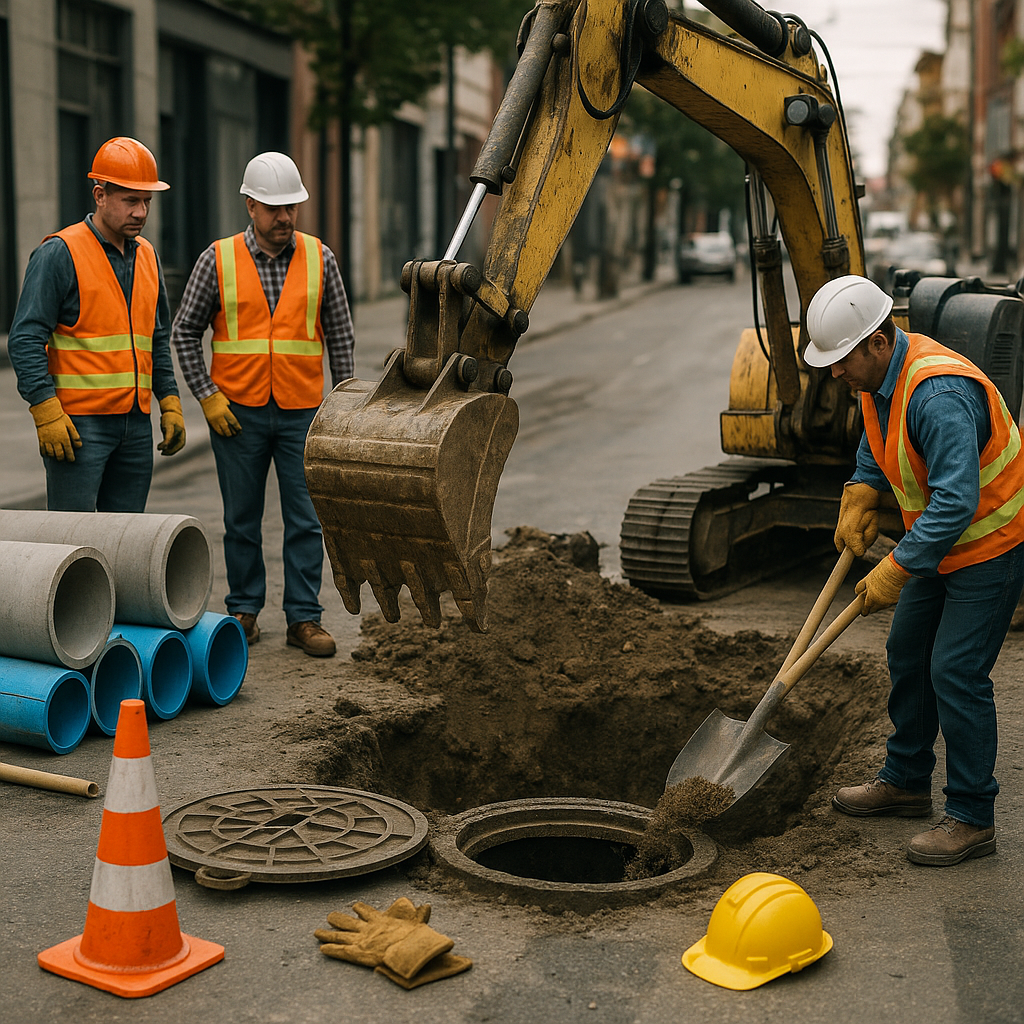Top Sewer Inspection Practices in 2024
Discover top sewer inspection practices in 2024, featuring AI, robotics, and safety protocols for efficient and sustainable operations.

Top Sewer Inspection Practices in 2024
Introduction
In 2024, the sewer inspection industry is undergoing a significant transformation driven by technological advancements, changing regulations, and an increased focus on sustainability and safety. This article explores the best practices for sewer inspection businesses to remain competitive and effective in this evolving landscape.
Table of Contents
- Introduction
- New Technologies and Equipment
- Industry Regulations and Standards
- Market Trends and Business Opportunities
- Safety Protocols and Best Practices
- Recent Case Studies or Success Stories
- Cost and Pricing Information
- Conclusion
New Technologies and Equipment
AI and Machine Learning Integration
AI and machine learning are revolutionizing sewer inspections by enabling automatic defect detection, such as cracks, corrosion, and blockages. This technology reduces human error and facilitates predictive maintenance, ensuring timely intervention and minimal disruption.
- AI-driven cameras enhance accuracy
- Predictive analytics for better maintenance scheduling
- Reduced inspection time and costs
High-Resolution Imaging
The use of 4K and ultra-HD cameras with pan-and-tilt functionalities provides clearer insights into sewer conditions, allowing for more precise defect identification and improved decision-making.
- Enhanced clarity and detail
- Improved defect identification accuracy
- Suitable for complex inspections
Wireless and Portable Systems
Wireless, battery-operated inspection tools are becoming increasingly popular. Their portability allows for easier access to remote and confined areas, increasing operational efficiency.
- Lightweight and easy to transport
- Increased accessibility in hard-to-reach areas
- Enhanced flexibility for field technicians
Robotics and Autonomous Systems
Crawler robots and lateral-launch crawlers are enhancing mobility and data collection efficiency across sewer networks, particularly in challenging environments.
- Improved maneuverability
- Enhanced data collection
- Reduced need for manual inspection
Smart Plumbing Systems
Integration of sensors and remote controls in residential plumbing systems supports real-time monitoring and early leak detection, contributing to water conservation and cost savings.
- Real-time monitoring capabilities
- Water conservation through leak detection
- Enhanced consumer convenience
Industry Regulations and Standards
As environmental concerns and infrastructure resilience become more pronounced, the industry is seeing a shift towards stricter regulations. These aim to prevent leaks, contamination, and safeguard public health, pushing for enhanced inspection and maintenance standards.
- Emphasis on environmental sustainability
- Stricter maintenance and inspection protocols
- Focus on public health and safety
Market Trends and Business Opportunities
Market Growth
The sewer cameras market is projected to grow significantly, driven by urbanization and aging infrastructure. AI-powered, portable, and connected equipment are in high demand, offering numerous business opportunities.
- Global market value of USD 389 million in 2024
- Projected CAGR of 5.7% through 2032
- Increased municipal and residential investments
Sustainability and Innovation
The push for sustainability is driving innovation in water-efficient fixtures and greywater recycling, influencing the plumbing and sewer inspection landscape.
- Water-efficient solutions gaining traction
- Greywater recycling technologies
- Integration with smart home systems
Safety Protocols and Best Practices
Enhanced Safety Measures
Utilizing robotic and remote inspection tools helps minimize the need for human entry into hazardous sewer environments, significantly improving worker safety.
- Robotics reduce manual entry
- AI minimizes human error
- High-resolution cameras for comprehensive inspections
Inspection Frequency and Techniques
Regular inspections using advanced technologies help prevent costly failures and mitigate environmental hazards.
- Scheduled inspections for early issue detection
- Use of crawler systems for comprehensive analysis
- Adoption of AI and high-resolution imaging
Recent Case Studies or Success Stories
- RIDGID Tools' SeeSnake microDRAIN APX: Featured at the WWETT Expo 2025, showcasing advanced imaging capabilities.
- Envirosight's ROVVER X SAT II: Demonstrated improved launch range and reliability, enhancing inspection reach.
- CU Denver's AI Tool: Automates defect detection, improving accuracy and efficiency in sewer inspections.
Cost and Pricing Information
Investing in advanced sewer inspection technologies reflects the growing market demand and technological sophistication.
- The sewer cameras market is valued at USD 389.44 million in 2024, with expectations to reach USD 606.79 million by 2032.
- Sewer machines are valued at USD 118.3 million, with pricing varying by technology.
Conclusion
Embracing advanced technologies like AI, robotics, and high-resolution imaging, along with adhering to evolving safety protocols and regulations, are crucial for sewer inspection businesses in 2024. These practices not only enhance efficiency and safety but also open new avenues for growth in a market poised for significant expansion.
Professionals in the sewer inspection industry must stay informed about these trends and technologies to remain competitive and successful in a rapidly evolving landscape.